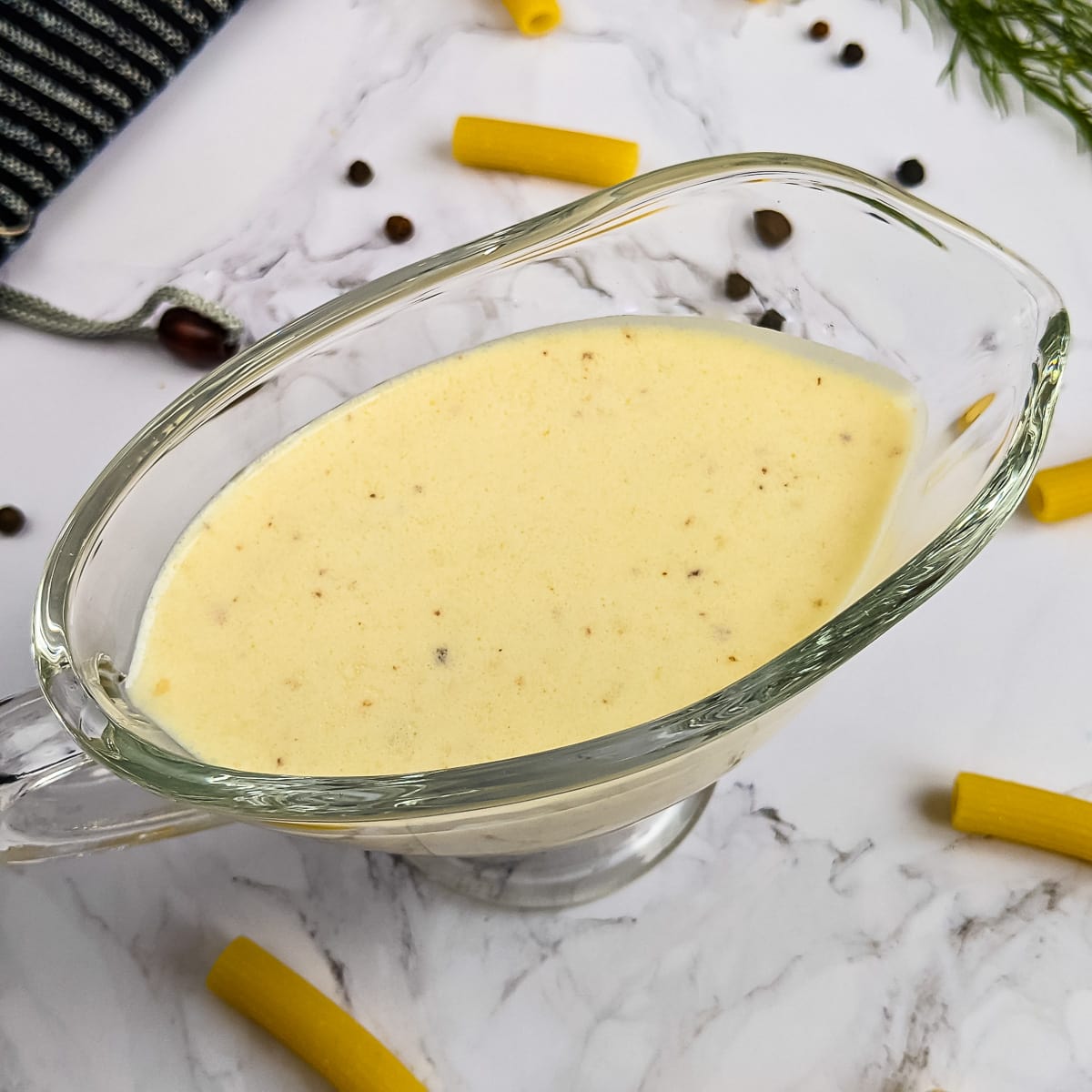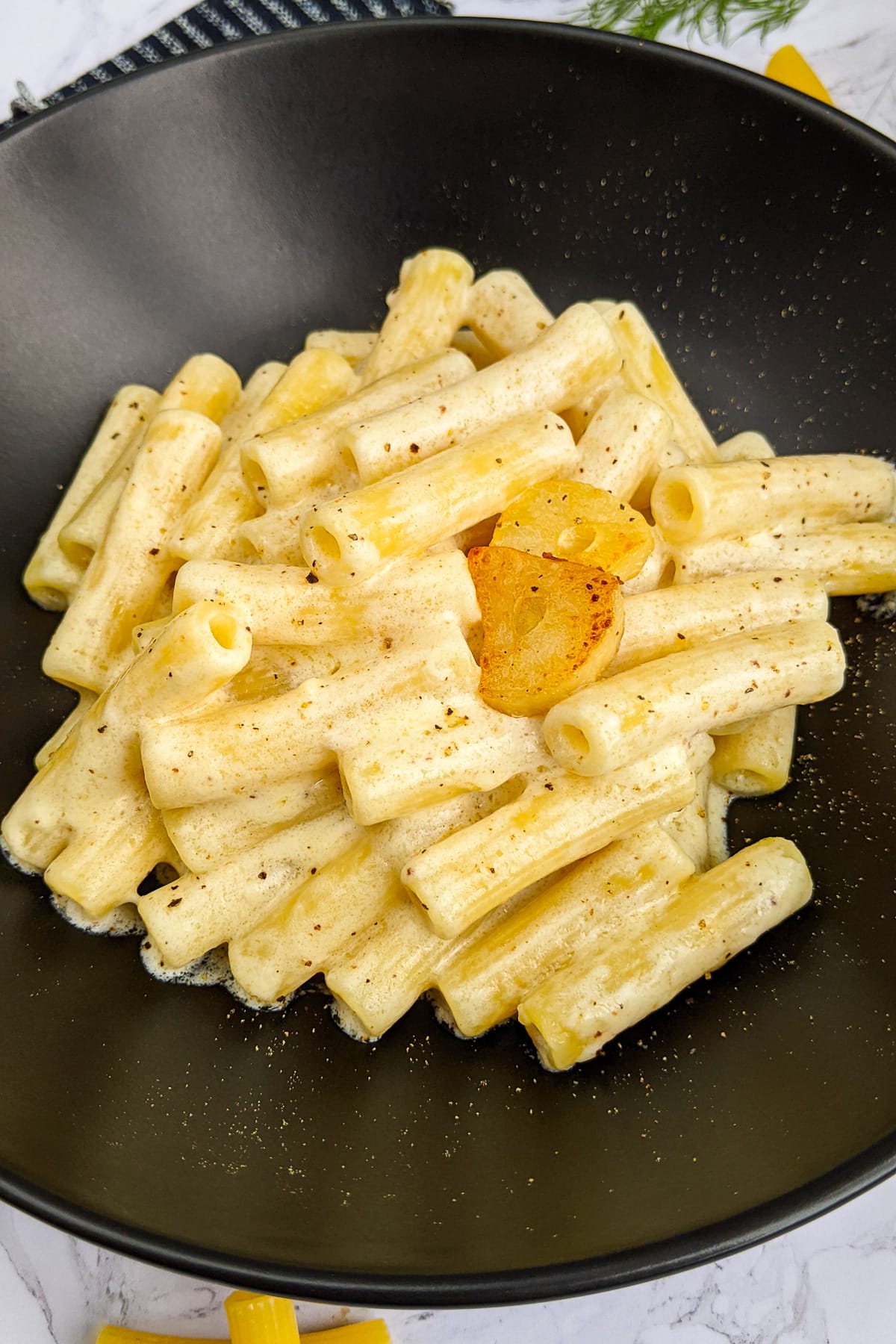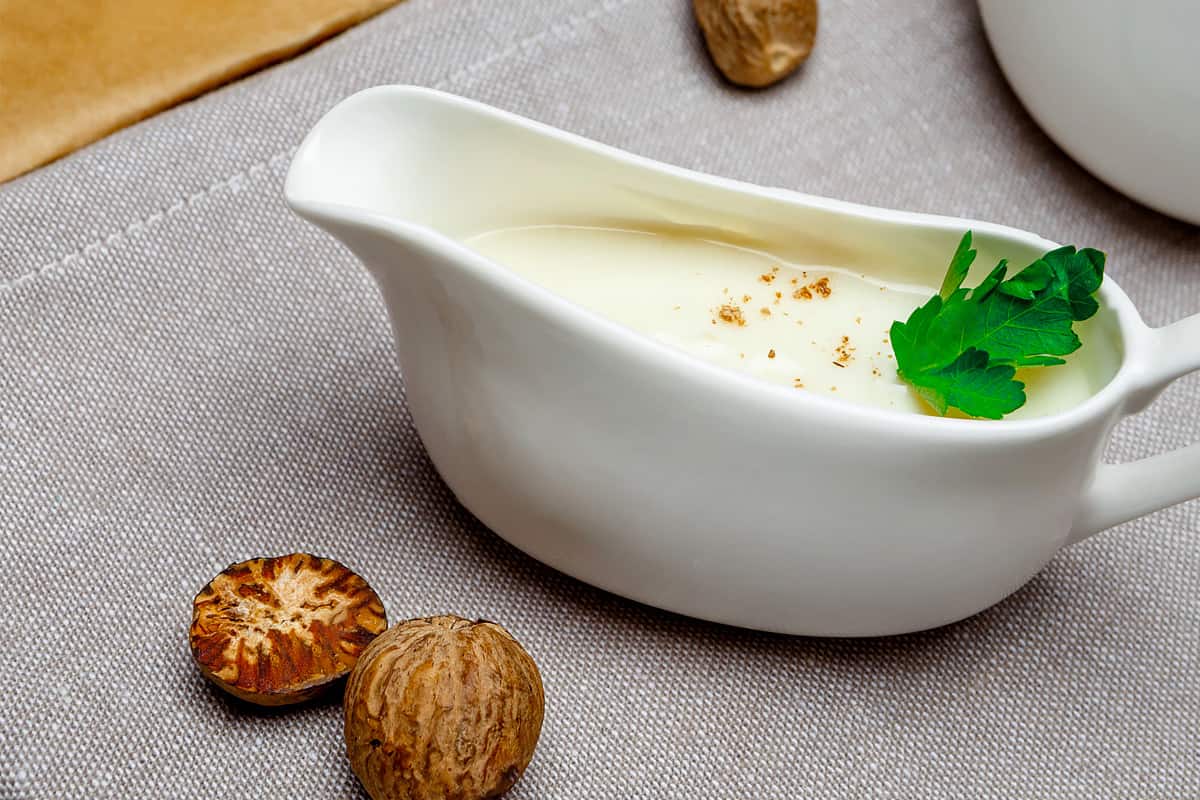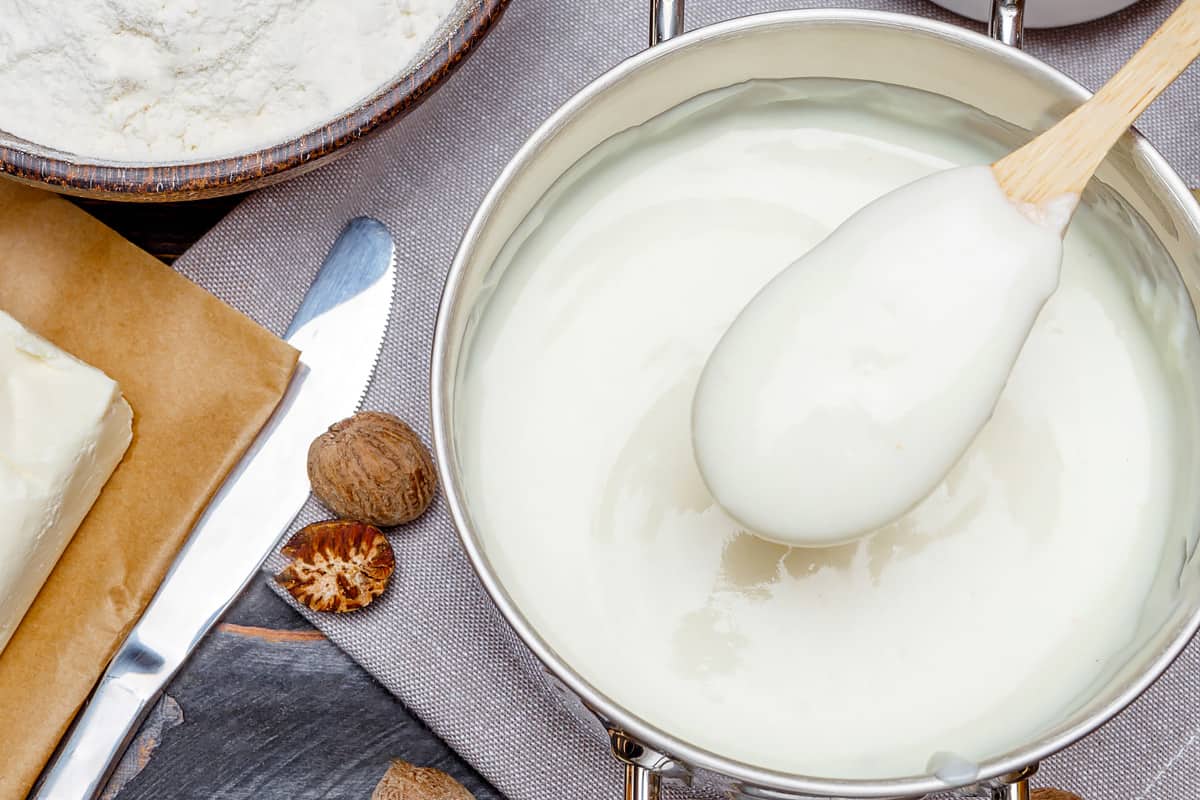Wondering if you can freeze a cream-based sauce like is Alfredo, Bechamel, or Mornay Sauce? Does it freeze well? Will the cream separate from the rest of the ingredients? Can you make something about that? Let’s find out!

Even if it is a little harder to freeze cream sauces, using the right technique, you can still enjoy your favorite cream sauce after freezing and thawing the creamy sauces or creamy dishes.
Can You Freeze Cream-Based Sauces?
Yes, you can freeze the cream-based sauces safely for up to 3-6 months. The tricky part with creamy sauces is that they may separate after defrosting. To bring it back to its original texture, you must mix it continuously when you reheat it.
Also, it is worth mentioning that you should also pay attention to how well other ingredients freeze that was used in that creamy sauce or dish.
If we’re referring to the classic bechamel creamy sauce, you shouldn’t have any issues as it doesn’t contain any ingredients that may give you some trouble during the freezing.
Can You Freeze Other Dishes That Contain Creamy Sauce?

If you did a plate of delicious alfredo pasta or a nice mac and cheese recipe, things would complicate a little bit as it would be harder to incorporate the cream back into the sauce.
Also you should also keep in mind what other ingredients that dishes contain and how well those ingredients are freezing.
Do these ingredients release or absorb moisture during the freezing and thawing process? If the answer is yes, things are a little more complicated as you will need to fix that.
If those ingredients absorb the moisture from the dish, when you reheat them on the countertop, I recommend adding a bit of broth or making a little extra sauce to add to your thawed dish when you will reheat it.
Pro Tip: You can freeze a few small containers with creamy sauce, and, when needed, you can defrost the frozen creamy sauce and add it over those creamy dishes that have absorbed the sauces.
For example, if your creamy dishes have some ingredients that will release moisture after thawing (like mushrooms) and you don’t like their texture, you may use a few breadcrumbs that absorb that extra moisture.
If you don’t have time for all these fixes, then consider freezing the dishes and sauces separately. So you will combine them together only after thawing.
But of course, that is possible only when you make them from scratch with the idea of freezing them.
If you have some leftovers you want to save for later, you will need to pay attention to those tips I told you a few rows ago on how to save the creamy sauces or creamy dishes after they thaw.
How to Freeze?

If you prepared the creamy sauce home from scratch and it is still hot, you should leave it for a while to ensure it completely cooled down. Otherwise, the creamy sauce may start to crystalize when you put it into the freezer.
This happens because the temperature difference between the sauce and the temperature of the freezer will be too high. That heat will condensate and later transform into ice crystals that will break the texture of your creamy sauce.
To avoid that, leave the sauce on the countertop until it is safe to put into the fridge. Then move it into the fridge in airtight containers and leave it here for a few hours. During that period, the temperature of the sauce will lower even more.
Afterward, you can move to the next stop and transfer the airtight container with the sauce into the freezer. Don’t forget to stick a label with the date and expiration time.
Quick Note: Putting the creamy sauce in the fridge before moving it into the freezer is not a must, but it is recommended if you want to get the best texture from your sauce after freezing.
How to Defrost Correctly?

To keep the best texture you can from the frozen sauce, you should let it thaw slowly. The best method is to leave it overnight in the fridge before you start reheating on the stove and using it further in your meals.
What to Do if Sauces Split?
If you notice that the cream is separated from the sauce after it is thawed, put it on the stove on low heat and mix it continuously until the cream incorporates back into the sauce and gives it that creamy texture.
Pro Tip: If the cream splits after thawing, consider adding a little fresh cream and giving it a good stir.
Signs That Cream Sauce Has Gone Bad
Unpleasant odor
If your cream sauce has developed an off smell, it’s likely a sign of spoilage. Fresh cream sauce should have a mild, creamy aroma. A sour, rancid, or musty smell indicates that the sauce has gone bad and should not be consumed.
Mold or discoloration
Check your cream sauce for visible mold or any unusual color changes. Mold may appear as fuzzy or slimy spots in various colors, while discoloration could be a sign of bacterial growth or oxidation. If you notice any of these signs, discard the sauce immediately.
Separation or curdling
While some separation can occur in cream sauces over time, extreme separation or curdling may be a sign that the sauce has gone bad. If the sauce appears curdled, with solid clumps and watery liquid, it’s best to discard it.
Change in texture
A fresh cream sauce should have a smooth and creamy texture. If your sauce has become excessively thick, lumpy, or grainy, it may be a sign of spoilage.
Off taste
If, after checking the sauce for the above signs, you’re still unsure whether it’s safe to consume, taste a small amount. A spoiled cream sauce may have a sour, bitter, or otherwise unpleasant taste. If it doesn’t taste right, trust your senses and discard the sauce.
Conclusion
If the creamy sauce doesn’t contain any other ingredients that don’t freeze well, then you can safely freeze the creamy sauces for up to 3-6 months without losing too much of their texture and flavor.
🤔 Answering Your Questions:
How Do I Properly Freeze Cream Sauce to Maintain Its Quality?
To properly freeze the cream sauce and maintain its quality, first, allow the sauce to cool completely at room temperature. Then, transfer the sauce into airtight, freezer-safe containers or heavy-duty freezer bags, leaving some room at the top for expansion. Finally, label the containers with the date and contents, and place them in the freezer, ensuring they lay flat and are not overcrowded.
How Do I Properly Thaw and Reheat Cream Sauce?
Remove the container from the freezer and place it in the refrigerator for several hours or overnight to thaw. Once thawed, gently reheat the sauce in a saucepan over low heat, stirring frequently to prevent scorching. If the sauce has separated, use a whisk to combine the ingredients until the texture is smooth again.
Can I Refreeze Thawed Cream Sauce?
It is not recommended to refreeze thawed cream sauce, as this can further compromise the texture and flavor. It is best to only thaw and reheat the amount of sauce you plan to use immediately.
Are There Any Specific Types of Cream Sauce That Should Not Be Frozen?
While most cream sauces can be frozen, those with a high cheese content, such as Alfredo sauce, may not freeze as well due to the potential for the cheese to separate and become grainy. Additionally, sauces containing vegetables or other ingredients with high water content may become soggy upon thawing.
Can I Freeze the Cream Sauce in Ice Cube Trays for Portion Control?
Yes, you can freeze cream sauce in ice cube trays for portion control. After the sauce has frozen, transfer the cubes to a freezer-safe bag and label it with the date and contents. When you need a small amount of sauce, simply remove the desired number of cubes and reheat them in a saucepan over low heat.

Leave a Reply